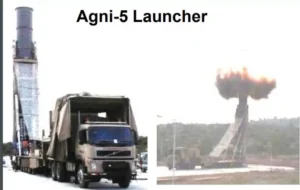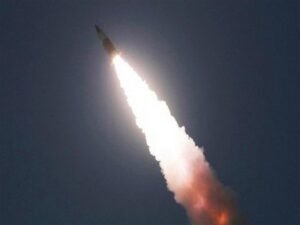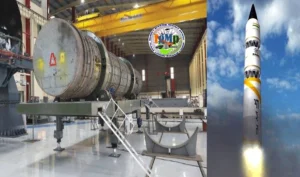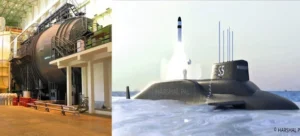Source : The EurAsian Times
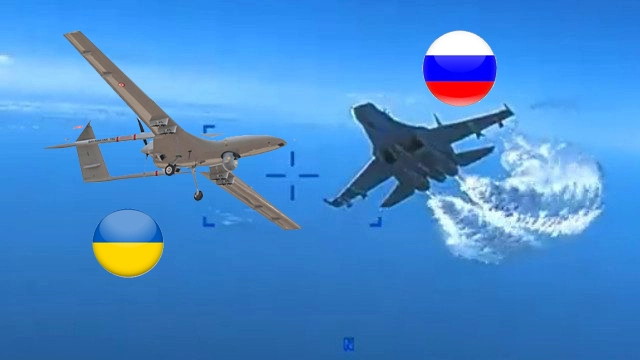
A Turkish Bayraktar TB2 drone reportedly came under attack by a Su-27 Flanker, days after the US Air Force alleged that the Russian fighter attacked its MQ-9 Reaper drone, forcing it to crash.
A video purportedly showing a Russian Air Force (VKS) Su-27 fighter attempting to shoot down a Ukrainian Bayraktar TB2 drone was published by Turkish media. Like the incident involving the MQ-9 Reaper, this incident allegedly took place over the waters of the Black Sea and, more specifically, near the Crimean coast.
According to reports in local Turkish media, the Su-27 is believed to have used jet wash on the Turkish drone to disrupt the thrust of the drone. Jet wash is essentially the turbulence formed at the back of the aircraft as it passes through the air.
However, it is insufficient to make the drone lose operational capability, which is why the TB2 survived this encounter.
In a stark departure from its usual practice of shooting down aerial systems operated by the Ukrainian military, the Su-27 did not use any air-to-air missiles to shoot down the TB2 drone. This has given the impression that the pilot flying the jet could not decipher whether the drone belonged to or was operated by Ukraine.
A Twitter account that goes by the ‘Ukraine Weapons Tracker’ wrote in a tweet, “It’s unknown why air-to-air missiles weren’t used to destroy the drone, however, it is likely the pilot didn’t know what drone it was, and who was operating it.”
Further, the video shows two attempts made by the Su-27 to take down Bayraktar TB2. It is not immediately clear whether the same fighter made the two attempts.
It is pertinent to note that the Russians were well within their rights to shoot the drone down. Some military watchers have also noted that there is a possibility that the fighter jet was not armed with any air-to-air missiles. The Russian Ministry of Defense (MoD) is yet to comment on these reports.
The report comes five days after the Russian Su-27 Flanker grabbed global headlines after the US Air Force alleged that the aircraft had downed the US Air Force (USAF) MQ-9 Reaper drone on March 14.
The footage released by US European Command shows the encounter between a US MQ-9 Reaper drone and a Russian Su-27 fighter jet over the Black Sea. The video, which was recorded from a camera on the drone’s underside, shows the Su-27 fighter spraying the drone twice in different passes.
The second one is the apparent contact with the Reaper’s propeller in the video.
Russian Su-27 ‘Attacked’ Bayraktar TB2 Drone almost like MQ-9 Reaper; Failed to knock down Turkish UAV
Communication was lost with the drone as the image can be seen pixelating into color bars. Moreover, EUCOM acknowledged that the released video was altered for time and that contact with the drone was lost for a minute. When the video feed restarted, one of the propellers could be seen as damaged.
On its part, the Russian MoD has taken great pride in the encounter with the American drone. Last week, Russian Defense Minister Sergei Shoigu nominated the Russian Su-27 jet pilots who “prevented” a US MQ-9 Reaper drone from crossing the border.
TB2 Drones In Ukrainian Service
Early into the Ukraine war, Turkish Bayraktar TB2 drones emerged as the ‘ideal weapon’ that was believed to have the capability to change the course of the war. In fact, these drones assisted in several successful missions, like the sinking of the Russian flagship Moskva in which the TB2 drones likely helped.
Several videos showing Ukrainian drones obliterating Russian advances were widely shared on social media, attesting to the success of these drones.
However, media reports have indicated that these drones have largely vanished from the battlefield. The sudden disappearance of these drones from combat action somewhat baffled military analysts who have been trying to figure out the motive behind the action.
Turkey was reported to have supplied just 50 units of TB2 to Ukraine. However, the Russian side has claimed downing way more TB2 drones than Kyiv has supposedly received from Ankara.
Russian media reports in December 2022 noted that the Turkish drones had not performed as well as they did in Libya, Syria, and especially during the Nagorno-Karabakh war.
One of the TB2’s significant confrontations occurred during the strikes on Snake Island, which began in the first weeks of May and continued until the end of June. Several experts believe Russia has learned from its errors and improved its layered air defense system’s effectiveness due to the TB2’s extensive deployment.



